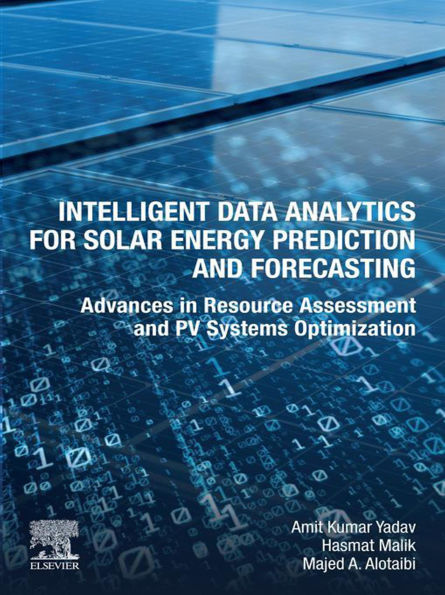Intelligent Data Analytics for Solar Energy Prediction and Forecasting: Advances in Resource Assessment and PV Systems Optimization explores the utilization of advanced neural networks, machine learning and data analytics techniques for solar radiation prediction, solar energy forecasting, installation and maximum power generation. The book addresses relevant input variable selection, solar resource assessment, tilt angle calculation, and electrical characteristics of PV modules, including detailed methods, coding, modeling and experimental analysis of PV power generation under outdoor conditions. It will be of interest to researchers, scientists and advanced students across solar energy, renewables, electrical engineering, AI, machine learning, computer science, information technology and engineers. In addition, R&D professionals and other industry personnel with an interest in applications of AI, machine learning, and data analytics within solar energy and energy systems will find this book to be a welcomed resource. - Presents novel intelligent techniques with step-by-step coverage for improved optimum tilt angle calculation for the installation of photovoltaic systems - Provides coding and modeling for data-driven techniques in prediction and forecasting - Covers intelligent data-driven techniques for solar energy forecasting and prediction
1143414594
Intelligent Data Analytics for Solar Energy Prediction and Forecasting: Advances in Resource Assessment and PV Systems Optimization
Intelligent Data Analytics for Solar Energy Prediction and Forecasting: Advances in Resource Assessment and PV Systems Optimization explores the utilization of advanced neural networks, machine learning and data analytics techniques for solar radiation prediction, solar energy forecasting, installation and maximum power generation. The book addresses relevant input variable selection, solar resource assessment, tilt angle calculation, and electrical characteristics of PV modules, including detailed methods, coding, modeling and experimental analysis of PV power generation under outdoor conditions. It will be of interest to researchers, scientists and advanced students across solar energy, renewables, electrical engineering, AI, machine learning, computer science, information technology and engineers. In addition, R&D professionals and other industry personnel with an interest in applications of AI, machine learning, and data analytics within solar energy and energy systems will find this book to be a welcomed resource. - Presents novel intelligent techniques with step-by-step coverage for improved optimum tilt angle calculation for the installation of photovoltaic systems - Provides coding and modeling for data-driven techniques in prediction and forecasting - Covers intelligent data-driven techniques for solar energy forecasting and prediction
180.0
In Stock
5
1

Intelligent Data Analytics for Solar Energy Prediction and Forecasting: Advances in Resource Assessment and PV Systems Optimization
350
Intelligent Data Analytics for Solar Energy Prediction and Forecasting: Advances in Resource Assessment and PV Systems Optimization
350Related collections and offers
180.0
In Stock

Product Details
| ISBN-13: | 9780443134838 |
|---|---|
| Publisher: | Elsevier Science |
| Publication date: | 06/27/2025 |
| Sold by: | Barnes & Noble |
| Format: | eBook |
| Pages: | 350 |
| File size: | 35 MB |
| Note: | This product may take a few minutes to download. |
About the Author
What People are Saying About This
From the B&N Reads Blog
